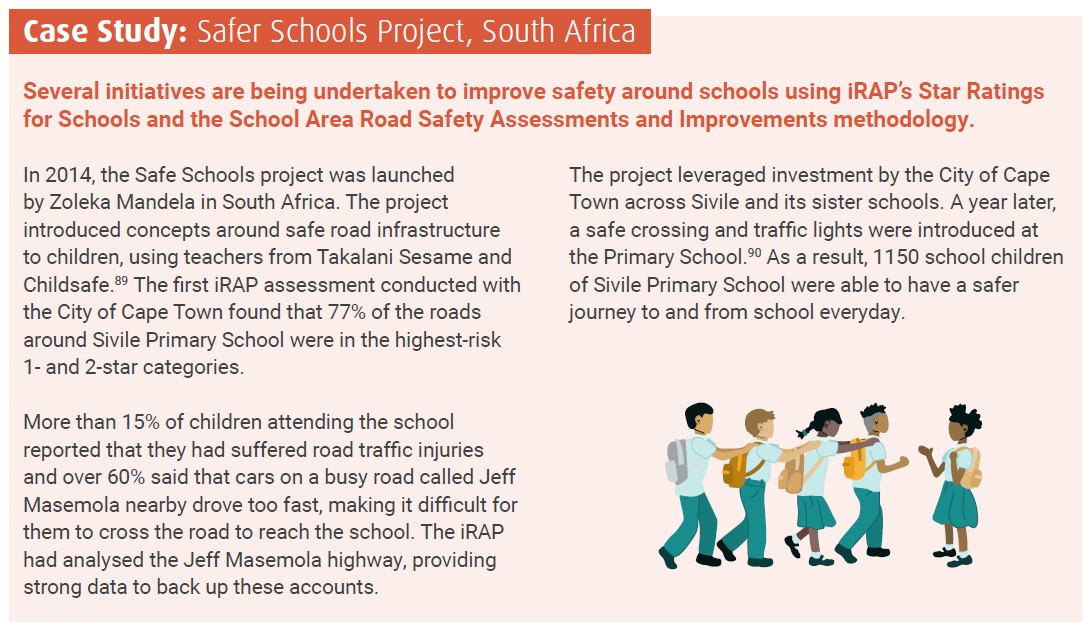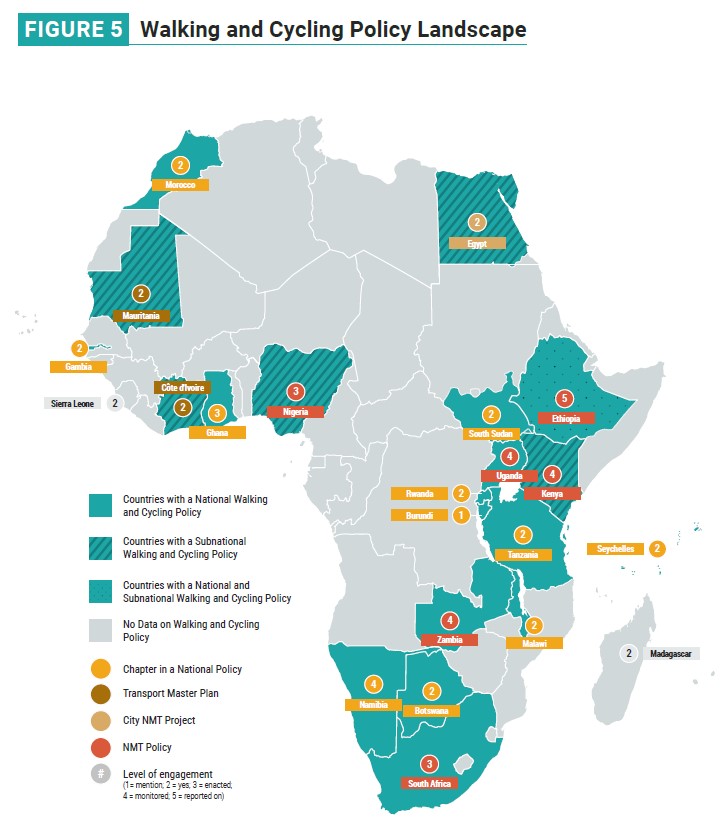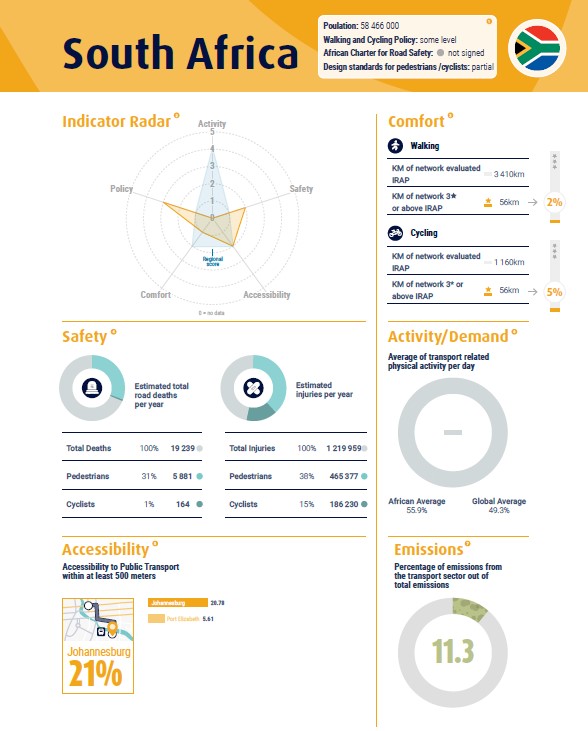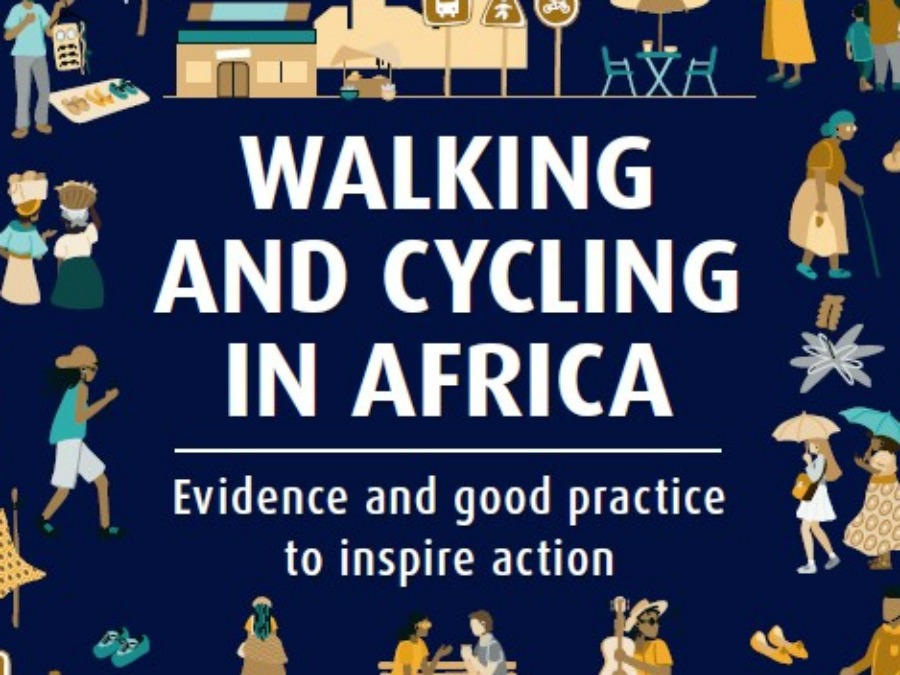Un nouveau Rapport sur la marche et le vélo en Afrique partage des preuves essentielles (y compris les données iRAP) et des bonnes pratiques (telles que le classement par étoiles des écoles) pour les gouvernements et les décideurs afin d'inspirer des actions visant à retenir, protéger et permettre aux personnes qui marchent et font du vélo.
« Ce rapport est un appel à l'action pour les 261 piétons et 18 cyclistes qui sont tués chaque jour sur les routes africaines », a déclaré Oumar Sylla, directeur du Bureau régional pour l'Afrique du Programme des Nations Unies pour les établissements humains, dans la publication :
« Même si la majorité de la population dépend des transports non motorisés, les pays d’Afrique comptent parmi les endroits les moins sûrs au monde pour se promener et faire du vélo.
"Le manque d'infrastructures essentielles rend l'expérience de la marche et du vélo difficile, désagréable et dangereuse", a déclaré M. Sylla.
L’accès universel à des systèmes de transport sûrs, abordables et durables est primordial pour atteindre les objectifs en matière d’environnement, de santé et de sécurité routière, conformément aux objectifs de développement durable, à l’Accord de Paris, au Nouvel Agenda urbain et à la vision transformatrice de l’Afrique à l’horizon 2063.
Relever les défis de la mobilité en Afrique nécessite un changement de paradigme dans la planification urbaine et des transports. La préférence accordée aux véhicules motorisés privés doit évoluer en faveur de systèmes de transports publics fiables intégrant la marche et le vélo.
Le rapport est une première tentative de collecte, d'analyse et de présentation de données visant à démontrer la réalité quotidienne du milliard de personnes en Afrique qui marchent et font du vélo, en moyenne 56 minutes, chaque jour. 78 pour cent des Africains marchent quotidiennement pour se déplacer pour accéder aux services essentiels.
Les conditions dans les 54 pays africains sont celles de référence.

Le rapport partage que, parmi les routes évaluées en Afrique à l'aide du Méthodologie iRAP, 95% des routes ne parviennent pas à offrir un niveau de sécurité 3 étoiles acceptable pour les piétons et 93% échoue pour les cyclistes. La plupart des routes sont classées 1 étoile, ce qui signifie qu'elles ne comportent ni pistes cyclables, ni passages à niveau sécurisés et que les véhicules roulent à grande vitesse.
Les données du classement par étoiles des piétons iRAP collectées dans neuf pays africains montrent que :
- 74% des routes étudiées ne comportaient pas de trottoirs
- 92% des routes évaluées ne comportaient aucun passage à niveau
- 48% de passages à niveau étaient mal signalés ou mal entretenus
- 55% de routes classées 1 étoile pour les piétons et 40% classées 2 étoiles
- Seules 4% des routes évaluées ont atteint l'objectif minimum de 3 étoiles en matière de sécurité.
Développé par le Programme des Nations Unies pour l'environnement (PNUE), le Programme des Nations Unies pour les établissements humains (ONUHabitat) et le Fondation Walk21, le rapport fournit les preuves, les connaissances et les actions clés nécessaires pour garantir que les décisions de transport prises aujourd'hui permettront de créer des réseaux plus sûrs, plus durables et plus résilients à l'avenir.
Il présente le paysage politique de la marche et du vélo, des recommandations à l'intention des gouvernements et des autres parties prenantes, et plaide en faveur de la rétention, de l'habilitation et de la protection de ceux qui se déplacent déjà de la manière la plus durable possible.
Les meilleures pratiques inspirantes sont mises en avant, y compris des exemples de parcours scolaires plus sûrs informés par Classement par étoiles pour les écoles.


Source des images : Rapport sur la marche et le vélo en Afrique


